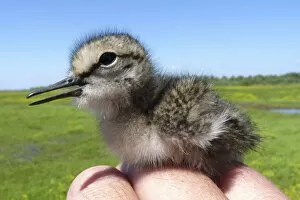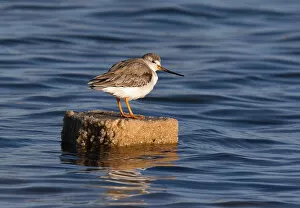Terek Sandpiper Collection
The Terek Sandpiper, scientifically known as Xenus cinereus, is a fascinating bird species that captivates with its elegant appearance and remarkable migratory patterns
All Professionally Made to Order for Quick Shipping
The Terek Sandpiper, scientifically known as Xenus cinereus, is a fascinating bird species that captivates with its elegant appearance and remarkable migratory patterns. This small wader belongs to the turnstone family and has been documented in various locations around the world. One notable depiction of this beautiful bird comes from a colour lithograph created in 1891. The artwork showcases the Terek Sandpiper's distinctive features, including its slender body and long bill perfectly adapted for probing mudflats in search of food. In the Netherlands, a juvenile they are be seen perched delicately on someone's hand. Its downy feathers hint at its young age while displaying an endearing vulnerability that contrasts with its future strength during migration. Kuwait serves as another stopover for these incredible birds during their extensive journeys. A photograph captures a mature Terek Sandpiper gracefully standing amidst coastal wetlands, showcasing its sleek plumage and highlighting the importance of preserving such habitats for their survival. During winter months, Australia becomes home to these avian travelers seeking warmer climates. Here, we witness a stunning image of a Terek Sandpiper enjoying the tranquility of an Australian shoreline - proof that even across vast distances, nature provides havens where creatures find solace. Oman also plays host to nonbreeding individuals seeking refuge along its shores. Multiple photographs showcase these sandpipers against Oman's breathtaking landscapes; their presence adds life to arid surroundings while reminding us of nature's resilience in adapting to diverse environments. As we marvel at these images capturing different facets of the Terek Sandpiper's life journey, let us appreciate not only their beauty but also recognize our responsibility towards conserving habitats critical for their survival. These captivating birds symbolize both fragility and strength as they navigate vast distances each year – truly embodying the wonders found within our natural world.





